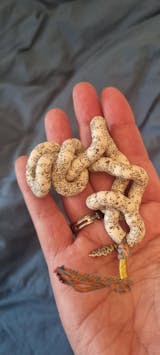The Ultimate Guide to Jade Bracelets: Meaning, Colors, Types
Jade bracelets have been treasured for millennia across East Asia and beyond. Revered for their beauty, durability, and cultural significance, jade adornments not only enhance style but also carry deep symbolism. This comprehensive guide covers everything you need to know—from the meaning and colors of jade to the various types available, how to select high‑quality pieces, and essential care tips.

1. What Is Jade and Why Wear a Jade Bracelet?
Jade refers to two distinct minerals—nephrite and jadeite—each prized for hardness, luster, and cultural resonance. In Chinese history, jade has been nicknamed “the stone of heaven,” believed to embody Confucian virtues of wisdom, compassion, and courage. Across other cultures, jade is valued for its protective and healing properties.
Wearing a jade bracelet connects you to these time honored traditions. Spiritually, many practitioners find that jade calms the mind and fosters emotional balance. Physically, the natural coolness of jade against the skin has been associated with improved circulation and detoxification in traditional medicine. Finally, as a status symbol, fine jadeite pieces can be appreciated, making them not only beautiful adornments but also potential investments.
2. Jade Colors and Their Symbolism
Jade’s spectrum of hues reflects both geological variety and energetic symbolism. When choosing a jade bracelet, consider how each color resonates with your intentions:
Green Jade: Ranging from pale apple-green to deep emerald, green jade is the most coveted. It symbolizes vitality, abundance, and renewal. In Feng Shui, green jade is used to attract prosperity and ward off illness.
White Jade: Associated with purity and clarity of mind, white jade supports spiritual growth and peaceful communication. It’s a popular choice for those seeking inner calm or resolution of conflicts.
Lavender Jade: Soft lavender jade exudes soothing energy, encouraging emotional healing and intuition. This rare hue often appeals to creatives and those on a path of self‑discovery.
Yellow Jade: Warm yellow jade carries the energy of confidence, optimism, and mental clarity. It can boost creativity and attract supportive relationships.
Black Jade: Deep black jade functions as a protective talisman, grounding scattered energy and deflecting negativity. It is particularly suitable for times of stress or transition.
Red/Orange Jade: Energetic red and orange tones symbolize courage, passion, and motivation. These bold colors can support personal empowerment and action.
Multi-color Jade: When two or more hues combine naturally in a single piece, the resulting energy mix can balance multiple aspects of well‑being at once.

3. Types of Jade
Understanding the two mineral species behind the jade name will help you make informed purchasing decisions:
3.1 Nephrite
Nephrite is a calcium‑magnesium silicate with a fibrous structure that makes it exceptionally tough.
Appearance: Typically found in creamy whites, dark greens, and browns, with a silky luster rather than high translucency.
Cultural Note: In China, nephrite was the original “royal jade” used in ritual objects and imperial burial suits.
Durability & Price: Its high toughness resists chipping, making it ideal for bracelets. Nephrite is generally more affordable, perfect for everyday wear.
3.2 Jadeite
Jadeite is a sodium‑aluminum silicate valued for its brilliant colors and translucence.
Appearance: Exhibits vivid emerald greens, pale lavenders, blacks, and even pinks. High‑grade jadeite can be nearly transparent, glowing from within.
Rarity & Value: “Imperial” jadeite with intense green hue and flawless clarity is extremely rare and commands auction‑level prices.

FAQ
Q1. How can I tell if my jade bracelet is genuine?
True jade feels cool to the touch, has a smooth, slightly oily surface, and exhibits natural translucency. Professional certification remains the most reliable verification.
Q2. What is the difference between nephrite and jadeite?
Nephrite is tougher but less translucent, found in darker greens and whites. Jadeite offers brighter colors and higher translucency, making it rarer and more valuable.
Q3. Are treated jade bracelets less desirable?
Treated jade (Type B or C) may look attractive at first but lacks the longevity, stability, and resale value of untreated Type A jade.
Q4. Can I wear jade in the shower or while swimming?
It’s best to avoid prolonged exposure to soap, chlorine, or salt water, which can affect polish and structural integrity over time.
Q5. How do I choose the right bead size?
Bead diameters from 6 mm to 8 mm suit delicate, everyday wear. Larger beads (10 mm–12 mm) make bolder statements but may feel heavier.
Now discover our exquisite jade collection—handpicked for their beauty and authenticity.
Related Articles:
How Much Is Jade Worth and the Most Expensive Jade Types
The Value of Jade: Understanding Its Worth and Cultural Significance
The Meaning and Value of a Jade Buddha Necklace
How to Choose the Right Jade Bracelet: A Comprehensive Guide






























